AI is an unavoidable concept whether watching fallen world science fiction, talking about autonomous vehicles, data analytics, or even our personal assistants like SIRI or Alexa. Consumers are adopting the technology rapidly (most unwittingly) to improve and simplify their lives. Businesses are using it in a variety of ways including spotting trends, identification of weak points in their processes, and getting to market more quickly. The use of AI in customer interactions is one of the largest areas of growth and opportunity for businesses and consumers to get big returns.
Kyle Holmes

Recent Posts
Every office has a need for mobile workers, and whether that means talent in other regions, road warriors, expectant mothers or a case of the sniffles, the need is the same. It pays for businesses to invest in the technology that allows their workers to continue their jobs regardless of their physical locale with varying mobile devices and Internet connectivity. Although many of us have already rolled out some version of this, the need has become more widespread and crucial with the risk of the COVID-19 pandemic. The situation has the risk of placing unprepared businesses in a tough spot, risking the livelihood of employees and the bottom line. It is critical we begin to prepare a business continuity plan in the event our communities are faced with school closures or even broader quarantines. In this blog post, we will discuss some of the technical considerations we must make in order to ensure our people are safe and our businesses remain afloat.
SD-WAN is certainly a popular tech buzzword nowadays, with a huge marketing effort and R&D dollars behind it. With all the buzz, the excitement can outweigh rational thought process and produce projects that are poorly planned and so end in disappointment. This article will help identify the keys to a successful project and provide a starting place for planning and selection of an SD-WAN solution that is right for your company.
Examining the Meraki Fullstack (Part 5)
The Meraki Systems Manager is a MDM (Mobile Device Management) platform that allows for a central dashboard showing all device information, with the ability to apply policy, deploy, remove, and update software on all devices across your network with a few clicks.
Examining the Meraki Fullstack (Part 4)
Meraki was founded in 2006 by two MIT graduates with funding from Google and Sequoia Capital. The focus in Meraki's formative years was building a wireless solution that combined cloud-based ease of use and administration with analytics and reporting.
Examining the Meraki Fullstack (Part 3)
Meraki was founded in 2006 by two MIT graduates with funding from Google and Sequoia Capital. The focus in Meraki's formative years was building a wireless solution that combined cloud-based ease of use and administration with analytics and reporting. From the start, the Meraki Dashboard set the brand apart. The dashboard gave administrators a centralized portal to view and manage their wireless from anywhere they could access Internet. Incredible right!?!
Examining the Meraki Fullstack (Part 2)
The Meraki MS Switches, powered by Cisco, provide the ultimate administrative experience with a combination of scalability, performance, and transparency. Meraki MS Switches also give administrators the freedom of zero-touch provisioning, as all appliances are managed from a web based interface. In this article we will focus on the Cisco Meraki Switching solution's approach to achieving high performance, security, and location analytics.
Examining the Meraki Fullstack (Part 1)
Meraki was founded in 2006 by two MIT graduates with funding from Google and Sequoia Capital. The focus in Meraki's formative years was building a wireless solution that combined cloud-based ease of use and administration with analytics and reporting. In this article we will focus on the Cisco Meraki Wireless solution's approach to achieving high performance, security, and location analytics.
Meraki, a Cisco product, has grown leaps and bounds in the last 5 years, evolving from a niche wireless provider with an incredible set of management tools to a Cisco-owned full network stack product including network switching, next generation firewall, wireless LAN, mobile device management, security cameras, and phone system. The Meraki stack brings the incredible feature set offered by Cisco, but without the dependence on CLI (command line interface). Instead all management and reporting is offered in a single web-based portal. This combination of smart management with the most powerful network toolset in the world gives Meraki a significant edge that all the other major players are chasing. In this article we will expand on why Meraki is winning the battle for network infrastructure.
The biggest technology trends, mergers, and acquisitions from 2017.
Every year our technology ebbs and flows bringing new tools, trends and ideas to the forefront for business and consumers alike. In 2017 many things changed for business technology, making it difficult for most of us to keep up. Between mergers, acquisitions, software defined tech and net neutrality not a single month went by without disruptive changes. So, without further ado, let's dive into to a few highlights of the last year!
RingCentral is so much more...
As a species, we desire the feeling of connection, to each other, to our teams and to our communities. Evolving technology is playing a larger and larger part in fulfilling this need beginning with letters and telegrams, and now evolving to real-time communications like phone calls, messaging and video chat. As a consumer today, we expect to be able to easily connect to our friends and loved ones at little to no cost. The surprising reality of this revolution in communications is that despite the opportunity for huge productivity gains enterprise solutions haven't kept up. The majority of businesses are just now scratching the surface of this amazing technology.
On the heels of our recently published article: 8 Reasons Retail is Migrating to Cloud Phones, Matrix Networks is taking a step back to discuss the value of building a modern network for retail. This article focuses on a network that is optimized for cloud voice migration and adoption. In this article you will learn the value of building a reliabile wide area network that improves bandwidth, enhances the user experience, while saving money and increasing sales! Enjoy.
Companies of all sizes are enjoying the benefits of Unified Communications platforms delivered from the cloud. The tools are fantastic for improving collaboration, integrating databases, providing Instant Messaging and much more. Unfortunately, these tools have limited application in a multi-site retail environment where call groups, parked keys, low cost solutions and simplicity still rule the day. This gap in vision has left many of our clients stuck on unreliable aging systems, with limited support and none of the UC features that could be useful, like SMS and large conference calls. In this article, we explore how Retail can take advantage of the new technology without breaking the bank.
Selecting a new cloud based phone system is complex, with many options, including regional providers, international pure cloud offerings and traditional phone system providers modified offerings. These products have broad overlap, making it difficult to determine the unique value of the different platforms. Our job at Matrix Networks is to help our clients understand their communication needs and match them with the appropriate provider. In this article we focus on 8x8, an industry leader consistently ranked at the top of Gartner's magic quadrant.
Team messaging applications, starting with Slack, have made a huge impact on the direction of Unified Communications. Since Slack launched in August of 2013 most businesses have adopted or experimented with the use of the product or a similar product. The surprising thing about this trend is that it is almost entirely driven and inspired by users, not managers or IT wizards. This is good news for managers who are looking for a way to improve teamwork: people actually want to do this!
If you have explored replacing your communications solution in the last 2 years you have likely faced the question, Hosted vs Premise delivery? If you believe the industry hype, the only real option is moving your phone system to a cloud solution. There can be substantial value in moving to a cloud phone system, but to assume it is the right solution for every business is foolish. In this article we discuss why some organizations might choose one over the other, and using ShoreTel as an example, we will showcase one solution that has adapted well to the new market shift.
Most of us have heard of SD-WAN and understand that it can have a huge impact on our networks and the way our businesses operate. What is SD-WAN? SD-WAN is best defined as traffic monitoring and management from physical devices to the application itself, capitalizing on flexibility and agility. This intelligent routing is abstracted into a virtual overlay, enabling a secured pooling of both private and public connections allowing for automation, centralized network control and real-time management across multiple links. In other words, it is able to take multiple sources of internet, optimize them, control the network flow and provide seamless failover. Sounds pretty great, right?
Unified Communications has evolved rapidly over the last 15 years, redefined again and again. Initially if voicemail was received in your email inbox and the system included a basic communicator client it was considered UC, but as technology evolved so did this definition. This slow creep of features developed into a requirement for web/video collaboration, Instant Message, Fax, SMS, Calendar integration and much more. The result is a confusing mess of different clients and tools inhibiting adoption and creating a blackhole of communication. Intuitive integrations to your core tools are critical to gaining adoption and seeing value from a UC product set.
On March 21st of 2017 the Toshiba dealer channel received letters announcing the wind down of the Telecommunications System Division (TSD.) In plain English, Toshiba Telecom (Toshiba IP Phone Systems) is shutting down their operations, leaving their customers and value added resellers in a tough spot. This is an important lesson to learn as the industry continues to evolve to cloud-based platforms. The common belief across industry insiders is this is just the first domino to fall in the legacy phone system market as the new platforms and offerings continue to disrupt.
Cloud Phone systems, also known as Hosted Phone Systems, are the choice solution of enterprises large and small with 70% having made the move or planning to make the move per Information Week. The reasons for this vary dramatically based on the specific business and sector they belong to. Cost savings and productivity top the list.
5 Common Misconceptions about Wi-Fi
Wireless internet has become a critical component for businesses of all types. Although the technology has improved dramatically over the last decade, there are many misconceptions about how to get best performance. This article is focused on giving you some simple tips for ensuring your wireless network is on the right path whether you are an Fortune 500 business or a Motel 6.
BrightMetrics is a reporting and analytics tool designed specifically to augment the ShoreTel phone system. At Matrix Networks we believe so much in this solution that we offer it as part of our Advantage+ ShoreTel Partner support, providing all the tools our clients need to gain insight and troubleshoot challenges. Although there are many reasons to use BrightMetrics and ShoreTel together here are three of our top reasons!
ShoreTel Support is the service provided to ShoreTel clients to support, upgrade, and maintain their existing on-premise ShoreTel solution. Whether you are in a blended environment or entirely on-premise, ShoreTel requires this support to ensure your system is current and well maintained. The support model is a well developed concept but can be complex to outsiders and clients. In this article we aim to give you a better understanding of what ShoreTel Support really is.
Unless you have been hiding under a rock for the last 15 years you have watched the evolution of SMS text messaging from the days of pagers to iMessage and GIFs. The SMS world has brought smiley faces, acronyms, and text speak into our world at a rapid pace. Simple, straightforward, fun, and aimed almost exclusively at personal relationships. As users across the globe have adopted SMS, our businesses have fallen behind, unable to grasp how to implement, control, or even understand the scope of how to position it for business use.
Emergency calling is something every good phone administrator should be prepared for. All too often, however, it is overlooked. The reality is that 99.9% of the time you don't need it, but when someone has an emergency, this view changes dramatically. It is critical that emergency services are able to identify where the call originated so they can reach the emergency location as quickly as possible.
We all want the same thing - boatloads of cash, world peace, and of course, successful tech projects. Unfortunately, these can all seem like distant realities, but at least one of them is attainable. Planning and good decision making are critical to the success of IT projects, but without experience, it is difficult to know what to prepare for. I am no expert in the deployment of a new NAS solution or printers, but I do know a thing or about new phone systems.
Portland's very own Bigleaf Networks is a local company with a very bright future!
Joel Mulkey and Jeff Burchett founded Bigleaf Networks after gaining experience with SD-WAN and Internet Optimization as part of the Freewire team, based out of Portland, Oregon. The two make a dynamic duo with a strong tailwind in an industry ready to explode. I am excited to see what the next 3 years bring.
When it comes to managing your business over the Internet, it’s important to have connectivity and solutions in place that allow you to monitor your network and ensure performance and reliability to remote applications. To that end, SD-WAN (Software Defined Wide Area Network) is fast becoming the go-to option for companies both large and small who want to integrate more cloud services for employees to use.
Communications is going through an unpredictable evolution. Ten years ago our businesses primarily communicated via a traditional desk phone and email. Today we use our cell phones and desktops to utilize SMS, LinkedIn, chat clients like Slack, face to face video, Facebook, Twitter, Email and much more to communicate with co-workers, family and clients. This has left many businesses struggling to keep the conversations going in the correct medium. The tools we deployed even 5 years ago are horribly out of date, meaning large swathes of your customer base are not connecting with your team, choosing a more modern competitor. This is clearly seen in companies like Amazon and ZOOM+ as they quickly gain market share, capturing their intended clients by embracing the new communications and technology shift. We must make this shift to meet our clients where they live, or risk losing the relationships we depend on.
As technology continues to evolve, a relatively new development is the move back to massive centralized infrastructure for application delivery to enterprises large and small. The trend brings with it incredible value but also new complexity that many firms haven't prepared for. The thought goes something like "if we move this to the cloud, all our technical needs are resolved!” Well now, someone is feeling a bit optimistic and definitely naive. Moving to the cloud requires a thoughtful approach for all aspects, from managing ever-increasing recurring costs, to how you plan to move data to and from cloud platforms. The first place to begin your preparation has to be the network, now and always.
If you have ever reviewed a phone bill you know it is written in a language that resembles Elvish rather than English. As the world transitions to phone systems offered as a service in the cloud, these bills and the corresponding pricing models will only become more complex and convoluted. As we evaluate any cloud solution, we are considering committing to paying monthly for a term typically one to three years in length. Small misunderstandings or oversights on pricing can have drastic effects on the long term cost of the solution.
SIP isn’t a four letter word, but for many years it might as well have been for most of us trying to use it. The results of a SIP deployment could be messy: poor voice calls, issues with phone features, and dropped connections only scratch the tip of the iceberg. Despite this our clients have often insisted they wanted to deploy SIP to save money. Along the way we have learned some valuable lessons. There is a right and a wrong way to deploy SIP, and I am sorry to say there are good and bad reasons to deploy it, too.
There are several elements to consider and decisions to make before you launch your new collaboration solution. The most important being: consider how your organization currently leverages collaboration software and set goals based on what you feel can be improved on. The following article will assist in this thought process and prove to be a valuable resource for new and experienced ShoreTel Administrators.

















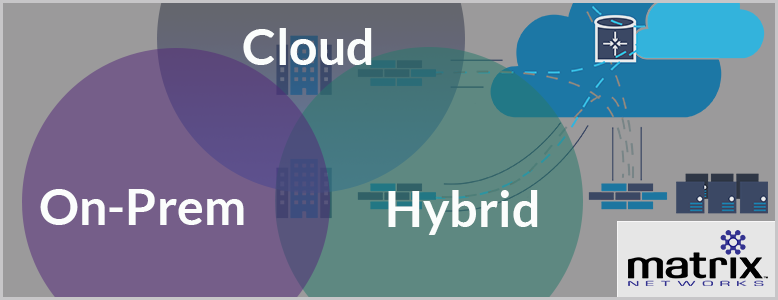
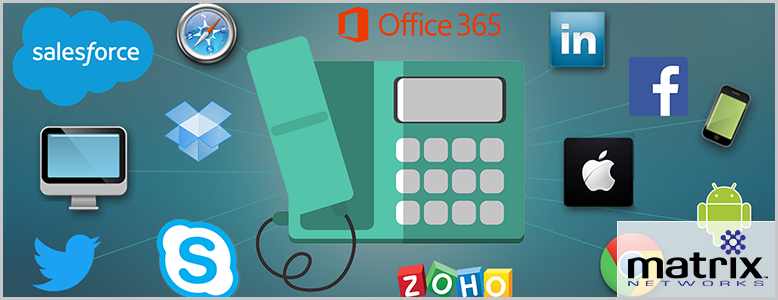
.png)



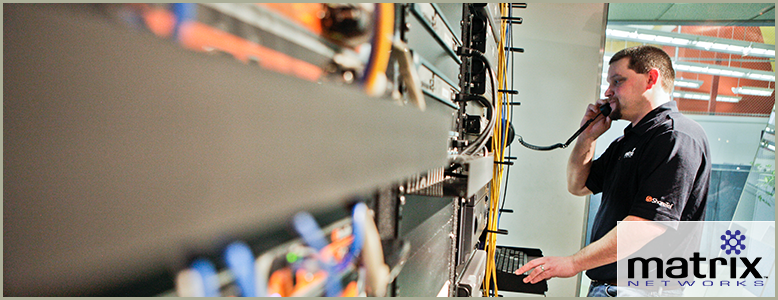





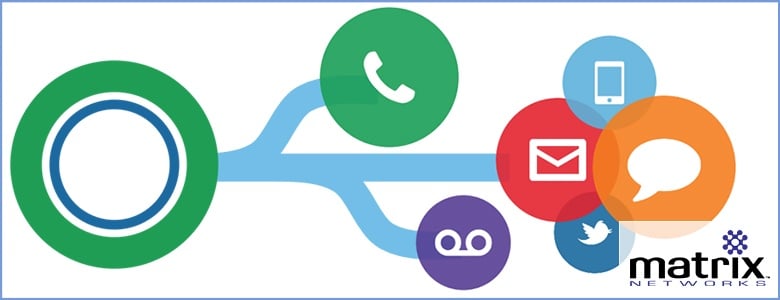



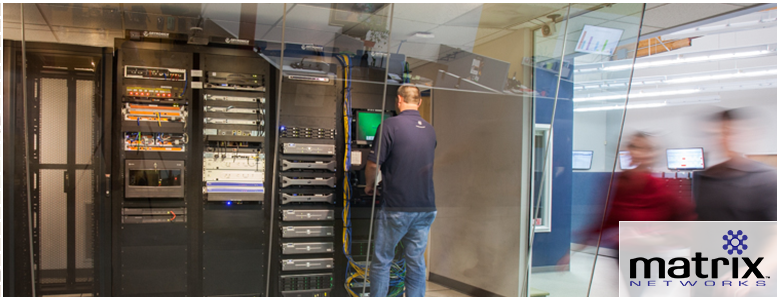
.svg%20(1).png?width=55&name=1200px-Logo_of_YouTube_(2015-2017).svg%20(1).png)

